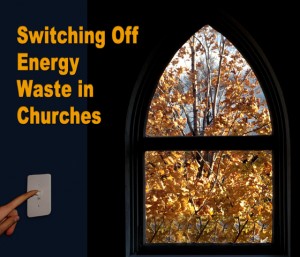Simple Ways to Cut Energy Expenses at Your Worship Facility
An energy efficient church stretches funds. Lower utility bills mean more money in the budget for doing what really matters: helping others.
There are several ways for worship facilities to reduce energy waste. Some of these ideas cost very little. Other cost-saving techniques require an initial investment— but reap great money-saving rewards.
 Start small with church building design. Add more expensive energy-saving methods as time— and the church budget— permit.
Start small with church building design. Add more expensive energy-saving methods as time— and the church budget— permit.
Begin with an energy audit to evaluate your facility’s current energy expenditures.
Low Cost Energy Savers
1. SEAL THE ENVELOPE. Check to make sure all windows and doors seal tightly. A little caulking and weather-stripping go a long way to eliminate air leaks in the building envelope.
2. SEAL LEAKY DUCTS. Check air ducts for leaks. Seal where needed.
3. ADJUST THE THERMOSTAT. In winter, lower the thermostat when the building is unoccupied. In summer, raise the thermostat during vacancy. According to government experts, changing the thermostat by one degree for at least eight hours saves about one percent on the utility bill. Adjusting the thermostat by five degrees or ten degrees should save about five to ten percent. Programmable thermostats make controlling temperature easier.
4. CHANGE FILTERS. Replace air conditioning and heating unit filters monthly for maximum efficiency. Clogged filters reduce airflow, forcing the units to struggle and use more energy.
5. ADD CEILING FANS. Ceiling fans use only about 60 watts of electricity. Air conditioners devour 3,500 watts or more. Use ceiling fans only when the room is occupied. Set the fans to circulate air down in summer and up in winter.
6. CLOSE VENTS. Shut air vents in any seldom-used rooms.
7. LIGHTS OUT. Always turn off the lights when a room is unoccupied. Encourage church staff and parishioners to do the same. Install occupancy sensors in smaller rooms like offices and classrooms. Reduce outside lighting to a safe minimum.
8. EFFICIENT LIGHTING. Compact florescent light bulbs (CFL) produce the same amount of light as regular bulbs but use much less electricity. CFL bulbs also last up to ten times longer than ordinary inefficient bulbs. Use LED (Light Emitting Diode) lights in all exit signs.
9. DIMMER SWITCHES. You need less artificial light in the daytime in a room with windows. Installing dimmer switches allows you to adjust the lighting accordingly, reducing the energy expended.
10. WATER HEATER. Set water heaters between 120 degrees and 130 degrees for maximum efficiency.
11. UNPLUG. Small amounts of energy are lost when appliances and electronics are turned off, but still plugged in. Unplug computers, peripherals, and other office equipment when not in use to reduce energy waste.
12. CHANGE SCHEDULES. Combine activities to cut the worship facility’s occupied hours. Reschedule janitorial services from night to daytime to decrease hours of operation and cut energy use.
Investing in Energy Savers
13. REPLACING EQUIPMENT. When air conditioning, heating, water heaters, dishwashers, fax machines, copiers, and other equipment needs replacing, choose high-performance models. Compare the ENERGY STAR® ratings to find the most energy efficient model.
14. FROM THE TOP. In hot climates, consider exchanging dark colored roofing for a lighter colored roof. Consider highly reflective cool-coated steel roofing. Cool-coated roofing lasts longer— and potentially saves fifteen percent on summer energy costs.
Building Energy-Efficient Churches
RHINO steel buildings frame many energy efficient steel churches and auxiliary buildings all across North America.
Our Pro-Value Insulation System cuts heating and cooling bills by as much as fifty percent. RHINO’s optional reflective cool-coated roofing provides additional savings for a more energy efficient church structure.
Learn why steel is the green building choice for all church structures. Call RHINO now at 940.383.9566 for a more information on a new energy efficient church building for your congregation.
